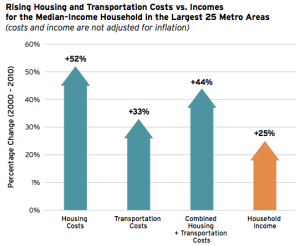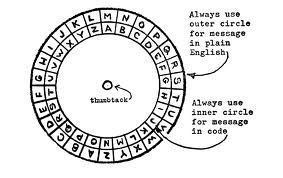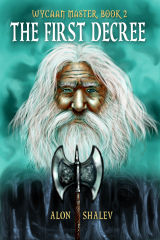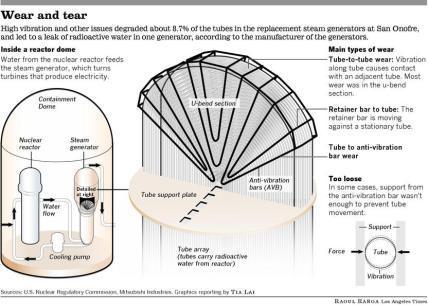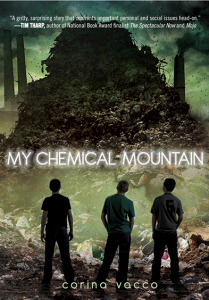Alon Shalev's Blog, page 14
June 19, 2013
Cat Caller Form
WARNING: The form below contains offensive language. Feel free to skip this post if you might be offended.
Two weeks ago, I shared a revealing conversation (revealing for maybe 49% of the population, I mean) I had with a young woman about the thoughts that go through her mind and those of most young women when out walking.
She sent me this form (you will need to double-click it to see bigger) to share.
I was never brought up in an environment where we cat-called. I find it difficult to understand what makes a man feel such power over a person he has never met that he would call out a derogatory comment. But it still happens and in areas of the world where you would imagine a more enlightened and aware populace.
In hebrew, the same word is used for husband and owner. I understand how this came about in Biblical times, but fail to comprehend how it has remained in our vernacular. Still, I recently followed a link about a story regarding my believed soccer team and reached a daily English newspaper – The Daily Star – every page had pin-ups, including one which reported on a horrific case of sexual abuse. I remember this happening when I was growing up in the UK, but today?
Last month, I introduced my youngest son to an intensive dosage of Star Trek. He asked me if I thought there were races from other planets watching us and, if so, why they had not made first contact. I responded that maybe our world is simply not evolved enough to make contact with: we still have wars, famine, poverty, etc.
It just occurred to me: perhaps the commanders of these star ships watching Earth are female (must be a 50% chance). Judging by our behavior to more than half our population, I understand why they might give our planet a wide berth.
—————————————————————————————————–
Alon Shalev writes social justice-themed novels and YA epic fantasy. He swears there is a connection. His latest books include: Unwanted Heroes and the 2013 Eric Hoffer Book Award for YA - At The Walls Of Galbrieth. Alon tweets at @alonshalevsf and @elfwriter. For more about the author, check out his website.


June 18, 2013
Hurray for Higher Costs! – Tom Rossi
Everybody seems thrilled that housing prices are rising again. Yippy! We’re all going to get to pay more for rent or a mortgage! Yay!
Well, not me. People don’t seem to realize, or at least the news media doesn’t realize, that when the housing market moves as a whole, it moves as a whole. What? Yes, it’s so simple that it sounds stupid.
Let’s say you own a 3-bedroom house and your company moves you to another, comparable city. You sell your house for $400,000. Well, then you buy a comparable house in your new city for, guess how much? $400,000.
What if you initially paid only $300,000 for your house? So what? That “profit” of $100,000 is going straight into the price of your new house. The only advantage is that you’ll be able to put a bigger down-payment on the new house… that is, assuming you didn’t take out a second mortgage. Assuming that you still need to live somewhere, rising prices won’t really help you.
Anyway, rising prices are mostly due to an illusion.
The main reason housing prices are on the rise, again, is that there aren’t enough houses available. Did you ever wonder why you keep hearing on the news that “inventories are low?” Did you ever wonder how that could be? There are three reasons.
One reason is that people have been hanging on their houses and condominiums (condominia?), renting them out instead of selling them because they are dissatisfied with current prices. Another is that investors (both human and corporate) are buying up houses while prices are low.
The third reason is the one that makes me angry. A close friend of mine figured out what people aren’t supposed to know – how to see the list of houses that could and should be on the market, but are being mysteriously held back by the banks. She bought a house that had been a “short sale.” Despite what it sounds like, this does not mean a “quick” sale, but that it was sold back to the bank for a price below what was owed on it’s mortgage.
But this house wasn’t on the real-estate listings. There was no “For Sale” sign in the front yard. It was simply being held in limbo by the bank. It was an incredible pain in the ass for her to buy this house, as well. The bank just didn’t really want to sell it – they delayed and delayed. And before she settled on this house to make an attempt to buy, she found lots of these “secret” houses – houses that should have been for sale, but weren’t.
Why do banks do this? Two reasons… First, they simply want to wait, like private homeowners and investors, for prices to go up, before they sell. But they also low inventories of houses. That makes the prices go up, so that any houses they own, they can sell for more.
Banks, thanks to their foreclosure fetish, have the power to make inventory levels lower than they really should be. They artificially control them. Does this strike you as just slightly unethical? Gosh, aren’t you just so sensitive and judgemental!
But besides little issues like logic and ethics, rising home prices just make things really difficult for those of us who don’t own one. It will be pretty much impossible for my wife and I to ever buy a home in the Bay Area. I can’t see how we could ever afford it. Heck, it will be pretty much impossible for us to buy a house in Detroit. And many, many renters are in the same boat. Rising housing prices shut many of us out. Many of us couldn’t possibly put together a big enough down payment and our rents and other living expenses keep rising, keeping us from saving up any money.
It’s interesting that the news media also (VERY briefly) have talked about how tough it is that people now have to spend almost 50% of their income on housing. But then they forget about that fact and go back to the usual housing-price-cheerleading. Whose side are they on? Evidently housing developers’.
-Tom Rossi
___________________________________________________________________________
Tom Rossi is a commentator on politics and social issues. He is a Ph.D. student in International Sustainable Development, concentrating in natural resource and economic policy. Tom greatly enjoys a hearty debate, especially over a hearty pint of Guinness.
___________________________________________________________________________


June 14, 2013
What Fathers Really Want
I would blog this on Sunday, except everyone is too busy hitting the diner or firing up the grill and anyway I rarely blog on the weekend. Father’s Day has always been a bit anti-climatic for me, coming a few days after my birthday. Given our family’s busy schedule, we tend to spread birthdays over a few days (okay weeks).
 I saw an advertisement for Father’s Day on Amazon. They suggested you show your undying appreciation by buying your old man either a green-striped necktie or an HD Kindle Fire. I keep thinking about this. My kids have never bought me a tie for Father’s Day, and it had better be darn special if they ever do!
I saw an advertisement for Father’s Day on Amazon. They suggested you show your undying appreciation by buying your old man either a green-striped necktie or an HD Kindle Fire. I keep thinking about this. My kids have never bought me a tie for Father’s Day, and it had better be darn special if they ever do!
Now I often wear a tie for work: anything from a power tie (usually striped) to a Jerry Garcia masterpiece (if I can get away with it). It infers a sense of confidence and raises my self-esteem – call me shallow, but I raise money for good causes and believe I am empowering the next generation to be socially conscious. Whatever it takes!
 But what does the tie signify? No, not incarceration, but time in the office … away from my family – the opposite of Fathers Day!
But what does the tie signify? No, not incarceration, but time in the office … away from my family – the opposite of Fathers Day!
So then I started to think about the Kindle Fire. I don’t need one. I watch movies on a TV, read my books comfortably on my old black-and-white kindle, listen to music on my phone or iPod, and type my novels on a laptop. Life is tough!
Offering me another toy that can keep me engaged with social media, TV shows, connected to the office is exactly what I don’t need. And if I do – I will buy it myself.
What I, and most fathers (moms too – but you’ve had your day) need is time: time to unwind, time to pursue hobbies and good health, and most of all, time to spend with my family. No man on his deathbed ever regretted not spending more time at the office. No man in his memoir ever mused that his commute was only three hours a day.
 So what do I want for Father’s Day? I want to go fishing with my kids, take the family into the Redwoods and hike, picnic, and do some archery together. Perhaps we can tickle-fight on the bed or snuggle on the couch and watch another episode of Big Bang Theory even if we’ve seen it a dozen times and know the punch-lines by heart. Better yet, Lord of the Rings for the 100-th time. It doesn’t matter, as long as we are doing it together.
So what do I want for Father’s Day? I want to go fishing with my kids, take the family into the Redwoods and hike, picnic, and do some archery together. Perhaps we can tickle-fight on the bed or snuggle on the couch and watch another episode of Big Bang Theory even if we’ve seen it a dozen times and know the punch-lines by heart. Better yet, Lord of the Rings for the 100-th time. It doesn’t matter, as long as we are doing it together.
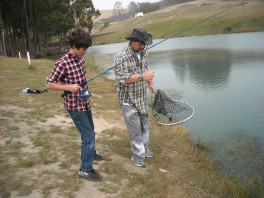 Because what a father really lacks … is time. Quality time with his family, before they grow up and move away and become adults in their own world. It’s not about the money spent, the thought that went into clicking the mouse to purchase a gift, or the wrapping. And this is a problem for Amazon and other retailers:
Because what a father really lacks … is time. Quality time with his family, before they grow up and move away and become adults in their own world. It’s not about the money spent, the thought that went into clicking the mouse to purchase a gift, or the wrapping. And this is a problem for Amazon and other retailers:
You can’t sell time. If you could: you wouldn’t need to sell ties and kindles for Father’s Day.

—————————————————————————————————–
Alon Shalev writes social justice-themed novels and YA epic fantasy. He swears there is a connection. His latest books include: Unwanted Heroes and the 2013 Eric Hoffer Book Award for YA - At The Walls Of Galbrieth. Alon tweets at @alonshalevsf and @elfwriter. For more about the author, check out his website.


June 13, 2013
An Activist’s Encryption: The 49er – Roger Ingalls
Today’s post will, hopefully, have a little brain teasing with some fun thrown in. It’s a coded message but relatively simple if you’ve consumed Ovaltine or watched a Christmas special on the tube. To help you decode, there are two hints in the title of this post.
(code: four-ty niner) M’H PMOI XS AMWL E JVMIRH LETTC FMVXLHEC, LI XYVRIH 49 CIWXIVHEC. XLEROW XS LMQ, M’ZI FIIR KMZIR XLI STTSVXYRMXC XS ZIRX QC TSPMXMGEP ERH WSGMEP JVYWXVEXMSRW XLVSYKL FPSKKMRK. LI EPPSAW QI XS TSWX QC STMRMSRW IZIVC XLYVWHEC.
(code: forty nine-er) QJYYH KRACQMJH JUXW!
(code: four-ty niner) EW QSWX SJ CSY ORSA, XLMW MW EPSR’W WSGMEP NYWXMGI FPSK, ERH MR GEWI CSY HSR’X ORSA LMQ XLEX AIPP, M’H PMOI XS WLEVI E PMXXPI SJ ALEX M ORSA. EPSR WLEPIZ PMZIW ERH AVMXIW MR XAS ASVPHW. LI MW XLI EYXLSV SJ XLVII WSGMEP NYWXMGI-XLIQIH RSZIPW ERH E WIVMIW SJ CSYRK EHYPX ITMG JERXEWC.
(code: forty nine-er) JUXW RB J PANJC OJVRUH VJW JWM QRB UNJY RWCX HJ OJWCJBH RB CQN ANBDUC XO QRB PXXM QNJAC. FQRUN XW J OJVRUH LJVYRWP CARY RW WXACQNAW LJUROXAWRJ, BQJUNE KNPJW FARCRWP JW NYRL OJWCJBH WXENU CX ANJM CX QRB BXWB JAXDWM CQN LJVYORAN. XENA CQN WNGC CQANN HNJAB, KXCQ BXWB JWM CQN JWLRNWC ANMFXXM OXANBCB KXAN FRCWNBB CX CQN BDVVXWRWP XO CQN FHLJJW VJBCNAB. CQNBN OJVRUH PJCQNARWPB KAXDPQC JW JMMNM PNWAN CX JUXW’B FARCRWP.
(code: four-ty niner) LMW JMVWX ITMG JERXEWC RSZIP, EX XLI AEPPW SJ KEPFVMIXL, ASR XLI 2013 IVMG LSJJIV FSSO EAEVH – CE GEXIKSVC ERH AEW E KVERH TVMDI JMREPMWX. XLI WIUYIP, XLI JMVWX HIGVII, AEW VIPIEWIH MR QEVGL 2013, ERH XLI XLMVH FSSO MR XLI WIVMIW, EWLFEV, MW IBTIGXIH MR SGXSFIV.
(code: forty nine-er) JUXW’B XCQNA PNWAN, ORLCRXW-KJBNM BXLRJU JLCRERBV, RB AXXCNM RW QRB CNNWJPN HNJAB LJVYJRPWRWP FRCQ CQN JWCR-JYJACQNRM VXENVNWC, OXA CQN ANUNJBN XO SNFB OAXV CQN BXERNC DWRXW, JWM QNUYRWP CQN KDAPNXWRWP PANNW VXENVNWC. CQRB UNM QRV CX NGYUXAN DBRWP ORLCRXW JB J YUJCOXAV OXA BXLRJU SDBCRLN. QRB FXATB RWLUDMN: DWFJWCNM QNAXNB FQRLQ KARWPB CXPNCQNA JW XUM KJCCUN-BLJAANM LQRWNBN JVNARLJW FJA ENC JWM JW RMNJURBCRL JWM YANCNWCRXDB HXDWP NWPURBQVNW FQX BQJAN J UXEN OXA BJW OAJWLRBLX, LXOONN JWM FRWN. CQNH BXXW MRBLXENA CQNH BQJAN NENW VXAN FQNW ANYANBBNM VNVXARNB ANBDAOJLN. XCQNA WXENUB RWLUDMN: J PJAMNWNA’B CJUN: J BCXAH XO QNJURWP XO OJVRUH, UJWM JWM LXVVDWRCH, JUXWP FRCQ J UXXT JC CQN YJPJW ANURPRXW JWM RCB CRVN-QXWXANM RVYJLC DYXW ADAJU LXVVDWRCRNB JWM CQN JLLRMNWCJU JLCRERBC: J ORLCRXWJU JLLXDWC XO CQN JBCXWRBQRWP ‘VLURKNU’ CARJU CQJC LJYCREJCNM KARCJRW RW CQN 1990B.
(code: four-ty niner) VIEH E JIA SJ EPSR WLEPIZ’W RSZIPW, CSY’PP FI IRXIVXEMRIH ERH FIXXIV JSV MX.
(code: forty nine-er) QJYYH KRACQMJH, VJW!
Here’s a final hint: http://cryptoclub.math.uic.edu/shiftcipher/shiftcipher.htm


June 12, 2013
Two Birthday Wishes
Today is my 49th birthday and what better way to spend it than blogging! Okay, I have other plans, so I have lifted from a post I wrote a couple of years ago. Forgive me.
I have two requests for you to consider on this auspicious day – one self-serving and the other philanthropic:
1) If you have read any of my novels, please pop over to Amazon.com (or Amazon.co.uk if you reside over the pond) and leave a review. I am less than 100 days from the release of my next epic fantasy novel so any review for Books 1 or 2, or my social justice novels, would help lay a great foundation for my next launch.
2) Consider a small investment at KIVA, a micro-loan non-profit that empowers the most impoverished to climb out of the poverty spiral in a sustainable and successful way. It truly is a remarkable agency. Below is an edited version of what I wrote a while back.
We can change the world. The problem is that there is so much to do, it can just feel so overwhelming. A few weeks ago my eldest son (then 11) and I saw a newspaper article with a multimillion dollar lottery winner. “Imagine how that could change your life,” I muttered.
My son decided to fantasize what we would do with a few million dollars. Admittedly, owning our own house, replacing our shuddering geriatric car, and a basketball backboard came first.
But then he began talking of projects to help people. We had recently met someone who runs a bakery on the East Coast that employs homeless and impoverished people. My next novel, Unwanted Heroes, is about homeless war veterans and my son began to describe how we could create a similar project for such people in San Francisco. As all youngsters do, he soon got caught up in the details.
I told him how a learned Jewish medieval scholar, Maimonides, had created a pyramid of different levels of giving. Providing someone with a skill and a means to support themselves and their family is considered the highest form of giving in Judaism.
This brings me to KIVA, a non-profit micro-finance bank that raises money through small gifts to help people invest in family or community enterprises. These are essentially loans, though the donors often reinvest the money back into Kiva. For more on the mechanics of micro-finance, click here.
For just $25, you can help a father of four in Tanzania set up a coffee shop, or a woman in India establish a juice bar. It is truly inspiring. Recently, I was invited to two birthday celebrations. The celebrants requested either not to receive gifts, or to donate to a charity in their name. I had a great time investing in Kiva on their behalf.
Join me to help change the world – one birthday gift at a time. Thank you.
—————————————————————————————————–
Alon Shalev writes social justice-themed novels and YA epic fantasy. He swears there is a connection. His latest books include: Unwanted Heroes and the 2013 Eric Hoffer Book Award for YA - At The Walls Of Galbrieth. Alon tweets at @alonshalevsf and @elfwriter. For more about the author, check out his website.


June 11, 2013
San Onofre Nuclear Shutdown – A Medium-Sized Victory – Tom Rossi
It was announced this week that the nuclear power plant at San Onofre, California (San Onofre Nuclear Generating Station, or SONGS) would be permanently shut down. Finally. But this was not really a victory for what I’ll call the “anti-really-obviously-stupid-nuclear” movement. And I’ll tell you why.
SONGS should never have been built. Its first reactor came on line in 1968. It wasn’t known, at the time of its construction, that the site was almost directly atop a fault line, but what was known? It was well known that California was the home of thousands of fault lines, even if some of those are fairly short.
What’s important is that geologists knew that they didn’t know about all of California’s faults. They knew that it was likely that many more than were known at that time would be discovered in the coming decades. They were right.
San Onofre, like pretty much anywhere in California, was an idiotically dangerous place to build a nuclear power plant. But that wasn’t the only issue.
Nuclear power plants have limited lifespans. This is due to both the inevitable seepage of radiation (and its effects) into various parts of the mechanisms of the plant, and to the fact that tiny flaws due to vibration (as was the case in San Onofre) make the first problem worse and also cause general deterioration that is incredibly difficult and expensive to fix. Mainly because of these problems, the risk of a radioactive leak or release increases with time.
So, nuclear power plants typically are only in operation for around 40 years anyway. As a whole, SONGS had outlived that, even though its second and third reactors had only been on line for about 30 years.
And, in fact, each of the reactors at SONGS had problems. Activists are claiming victory, and I wish it were so, but SONGS has succumbed not to political pressure nearly as much as decay and economics. And the victory gets even more hollow…
The news coverage of the closing of SONGS has been sparse and, as usual, somewhat dominated by the nuclear industry’s PR messages. And while some anti-nuclear activists are celebrating, continued industry control over the media may tell us which way the wind still blows.
Today, almost every story on SONGS is about how many jobs will be lost and how much it will cost to decommission the plant. That’s how dirty businesses are defended, now – they provide jobs. I guess we never should have shut down asbestos production. Think of all the jobs we could have saved!
And the cost of decommissioning any nuclear power plant is almost completely predictable and has to be figured into the total cost-benefit analysis of a nuclear power plant project. Decommissioning cost is part of the reason that nuclear power is an economic failure (a predictable one) as well as a hazard to both human and ecological health.
I pay close attention to corporate influence on the media. It’s visible pretty much everywhere, but often, so is the backlash. Other people who pay attention make lots of noise and usually get some media attention themselves when the media show bias toward war profiteers or oil companies, for example. But the nuclear industry dominates the media much more thoroughly. They act pre-emptively in planting their messages on networks like PBS (on the completely pro-energy-industy program “Need to Know” for example) and the other “mainstream” channels.
It doesn’t bother me so much that some people are pro-nuclear. Some of them are actually real environmentalists that have been convinced that nuclear is a solution to carbon emission and, therefore, climate change. But in the media, there is no debate. That’s because the anti-nuclear side has no money with which to sponsor television programming. The grass-roots movement is still very strong, but the nuclear industry fights top-down.
These days, I always hear about new reactor designs that will be the greatest things since sliced bread – with much less radioactive waste and so forth. I asked famously converted “climate skeptic” and physicist at UC Berkeley and Lawrence Livermore Labs, Richard Muller (who is a really nice guy, by the way) what he thought about these new reactor designs, and he said, “Well, they look good on paper.” Interesting response.
One thing I’m sure of is that the crop of older nuclear plants that are still in operation need to be shut down. Any old excuse will do just fine, but shut them down, soon. They are all old and the risk of an accident is increasing, as are stockpiles of radioactive waste.
The closing of San Onofre Nuclear Generating Station is certainly something to celebrate. But don’t sound the victory gong just yet. We have a long and difficult battle ahead if we want to slow down the energy-addiction-justified poisoning of our planet… and ourselves.
-Tom Rossi
___________________________________________________________________________
Tom Rossi is a commentator on politics and social issues. He is a Ph.D. student in International Sustainable Development, concentrating in natural resource and economic policy. Tom greatly enjoys a hearty debate, especially over a hearty pint of Guinness.
___________________________________________________________________________


June 7, 2013
Corina Vacco – Social Activist and YA Award Winning Novelist
I write because I believe fiction can be a vehicle for social change. I believe when the reader becomes emotionally engaged with a character, they too are moved to action. I met Corina Vacco when she joined the Berkeley Writer’s Group, and laughed at what I first thought, was a cool but whimsical YA novel with outrageous characters and wickedly sharp dialogue.

But Vacco uses her humor and excellent writing to fight for something she passionately believes in: our children deserve to grow up in a clean world as a foundation to each realizing his/her own potential. I can think of nothing more inspiring than empowering the next generation to action – and to do it reading and laughing is a powerful combination.
MY CHEMICAL MOUNTAIN, an award winning YA novel will be released by Random House, on June 11 and has been called THE OUTSIDERS of our generation. Vacco calls it “my love letter to a cleaner world, and my hope is that it will raise awareness of the growing problem of toxic towns and the lingering effects decades-old pollution can have on our present-day environment.”
Read her inspiring story below and, if you live in the Bay Area, join me at her book launch at Books Inc., Opera Plaza, 601 Van Ness, San Francisco at 7:00 PM on June 11 (appropriately situated opposite City Hall!).
=============================
Culture shock ensued when the Coast Guard moved our family from the sun-kissed beaches of Miami to the cold, polluted city of Buffalo. It’s not easy to switch gears from palm trees to smokestacks, from saltwater air to the nostril-burning smell of a local asphalt plant, and this is especially true when you’re an environmental activist.
I had a cursory knowledge of Western New York’s pollution history. I knew of the Love Canal disaster—an elementary school and hundreds of homes were built atop 21,000 tons of toxic waste that later oozed into basements and triggered serious illness, along with forced evacuations. I also knew Rust Belt steel workers had unknowingly rolled uranium for the Manhattan Project during WWII, and that the corresponding uranium waste had ended up in landfills throughout the Buffalo-Niagara region. I was scared to live in such a place. Alright, perhaps a better word is terrified.
No sooner had I unpacked than I joined the fight against a contaminated landfill adjacent to a school and playground. Residents whose backyards blended into the landfill’s slopes had received official letters telling them not to eat vegetables out of their gardens. Unfortunately, the town meetings and public comment periods were nothing but thinly-veiled smack-downs of the residents who dared voice concerns. Panels of industry “scientists” and a smug, highly-decorated Army Corps of Engineers representative in full uniform stood at the front of the auditorium and admitted that yes, hundreds of contaminants were leaching into the local groundwater, but don’t you know each dangerous ingredient fell within acceptable limits? Of course, no one had even begun to test the effects of the entire cocktail of contaminants on each genetically-unique individual in the room, but it didn’t matter. The panel of “scientists” was absolutely certain there was no hazard, and a decision was made to leave the landfill alone. The residents, who obviously could not sell their homes, were told to go back to their lives and “just relax”.
I lived in Buffalo’s art district, far away from this plagued town and its infamous landfill. I should’ve been able to rest easy. But as it turns out, activists can never really rest easy. Not in this world. I was devastated when I heard the landfill would not be remediated.
One of my good friends lived a literal stone’s throw from the landfill and invited me on a toxic tour of her neighborhood. We visited defunct factories, a radioactive creek, and the boarded-up homes of Love Canal. She then introduced me to her husband, and they told stories about growing up amid such intense pollution. They recalled splashing in puddles the color of anti-freeze, riding their bikes down the landfill’s slopes, and breaking into contaminated factories. I was moved by these accounts, how a world so foreign to me, so repulsive, could be viewed with…nostalgia. They weren’t ashamed of their neighborhood. They didn’t want to flee. They wanted the pollution cleaned up so they could stay. Imagine that.
I wrote the first outline of MY CHEMICAL MOUNTAIN in my car, parked at the foot of an ominous, snow-covered landfill. There, with my window cracked so I could breathe the industrial air, I had long conversations with an angry boy who’d suddenly taken up residence inside my head. I asked him all sorts of questions: What is it like to live near one of the most poisonous landfills in the world? Why do you and your friends break into the abandoned factories when you know it’s dangerous? Are you furious about what happened to your father? And my protagonist said, “I have a story to tell you. It’s about revenge.”
MY CHEMICAL MOUNTAIN (Random House, June 2013) went on to win the Delacorte Prize for a First YA Novel, and has been called THE OUTSIDERS of our generation. It is my love letter to a cleaner world, and my hope is that it will raise awareness of the growing problem of toxic towns and the lingering effects decades-old pollution can have on our present-day environment. Please visit me at www.corinavacco.com.
—————————————————————————————————–
Alon Shalev writes social justice-themed novels and YA epic fantasy. He swears there is a connection. His latest books include: Unwanted Heroes and the 2013 Eric Hoffer Book Award for YA - At The Walls Of Galbrieth. Alon tweets at @alonshalevsf and @elfwriter. For more about the author, check out his website.


June 6, 2013
Vote with Your Apps Dollars – Roger Ingalls
Last year 1.6 million cell phones were stolen nationally and 50% of all theft crimes in San Francisco are now related to cell phones. The proliferation of crime related to these smart gadgets is going through the roof and it’s a big headache for local law enforcement.
There is a way to thwart these techno-hooligans but the big smart phone manufacturers refuse to side with legal paying customers. Apple, Samsung and the others generate a good portion of their revenue from replacing stolen phones. Essentially, in the minds of these companies, crime pays.
San Francisco District Attorney George Gascon recently met with some of the cell phone manufacturers and asked them to voluntarily put permanent kill features into the phone so when reported stolen they are rendered useless forever. The stolen phone market would fade away because who’s going to buy a dead useless phone. However, the manufacturers ignored the request effectively endorsing the illegal market.
Garcon has now partnered with New York Attorney General Eric Schneiderman and they are scheduled to meet with the smart phone companies again in mid-June. With mounting pressure, maybe this time the smart phone manufacturers will act responsibly and side with legal paying customers and not the criminals. If not, it’s time for us non-criminal smart phone users to take action.
If Apple, Samsung and others don’t act responsibly, we should boycott them by not purchasing smart phone APPS. So far in 2013, four to five billion APPS are downloaded monthly; now that could be a powerful vote!
Let’s help Garcon and Schneiderman significantly reduce smart phone crime. If the phone makers don’t want to play then we shouldn’t pay. Using our phones to text, tweet and run other social media tools, we could organize a “don’t buy APPS day” to send a message. After losing a few hundred million, they may get a clue.
Vote with your APPS dollars!


June 5, 2013
Living In Fear
I grew up in a rough area of London during a time when there was a lot of racism on the streets. It was the 1970′s and the British Nationalist Party (then the National Front) were becoming too popular. I learned to be constantly aware of where I was walking, never wearing headphones (we had walkmans then), never going on the top of a double-decker bus, watching for alleys and dark driveways etc.
It was a stage that I am glad I have passed through (I still cross the road if I see a group of white men with short hair or shaved heads), but half our population doesn’t get that opportunity.
A female friend of mine, young and attractive, with long blond hair, said these words a few weeks back that are still haunting me: Every woman imagines her own rape. She was quoting someone else, but I could only think of those women I know and love.
When she had moved to the city, her mother had urged her to cut her beautiful hair short, warned her never to wear flip-flops (the attacker can step on them from behind and trip you), and brought her pepper spray.
When my wife began working at a clinic in a rough area and needed to lock up in the dark and walk to her car in a deserted car park, I bought the best pepper spray I could find. I was probably more scared than she was, but it was an insight into what goes through every woman’s head.
 We live in a country where we believe we are free. The question is, are we truly free, when half of our population needs to continually look over their shoulder?
We live in a country where we believe we are free. The question is, are we truly free, when half of our population needs to continually look over their shoulder?
—————————————————————————————————–
Alon Shalev writes social justice-themed novels and YA epic fantasy. He swears there is a connection. His latest books include: Unwanted Heroes and the 2013 Eric Hoffer Book Award for YA - At The Walls Of Galbrieth. Alon tweets at @alonshalevsf and @elfwriter. For more about the author, check out his website.


June 4, 2013
A Black Mark on Obama – Tom Rossi
From The Satirical Gazeeter and Hand Fishing Review…
Fox “News” report:
Welcome to the Fox “News” (actually makes quote sign with fingers) morning report. I’m Spiff Albinoman and we’ve just received an investigative report. This just in from the (insani)Tea Party Gazeeter and Hand Fishing Review:
It’s recently been uncovered that President Barrack Hussein Obama… is, in fact, black.
Or, as some prefer, “African American.” It turns out that we, er… I mean the large, highly intelligent group that has come to be known as the “birthers” was barking up the wrong tree. In fact, the answer was right in front of them, all along.
President Hussein may not, in fact, have been born in Kenya… but his father was. In fact Hussein Obama’s father was a full-blooded African and, in fact, black.
The meaning and significance of this can’t be overstated. This means that, irregardless of Obama’s mama and her national origins and/or race, Hussein is, in fact, at a bare minimum, half black.
Therefore, this fight over where Hussein was born is, in fact, moot. Constitutionally, a person of mixed race must have been the result of a mixed-race marriage and is, in fact, illegal. In fact, the whole marriage was illegal and any and all offspring from that marriage are, in fact, illegal.
This fact, these facts, in fact outweigh all of the ridiculous attempts to “Monica Lewinsky” President Hussein. In fact, many wonder why these attempts are being made, now that Hussein is, in fact, “termed out.” He can’t be re-elected and these attempts will, in fact, certainly be useless if Hussein does, in fact, stage some sort of coup, in order to install himself as permanent dictator.
However, the revelation that Hussein is, in fact, simultaneously black and of mixed race, could and should be used to impeach him, in his present term.
Well, we certainly look forward to that.
Next up after the break: George Will uses the letter, “F.”
-Tom Rossi
___________________________________________________________________________
Tom Rossi is a commentator on politics and social issues. He is a Ph.D. student in International Sustainable Development, concentrating in natural resource and economic policy. Tom greatly enjoys a hearty debate, especially over a hearty pint of Guinness.
___________________________________________________________________________






